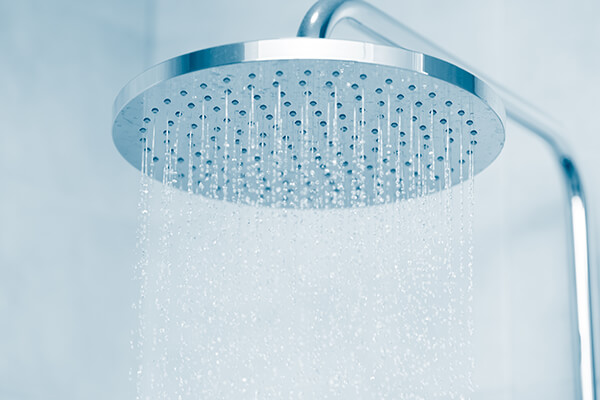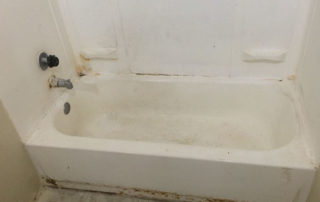5 Points Nobody Tells You around Shower & Bathtub Wall Panels
5 Points Nobody Tells You around Shower & Bathtub Wall Panels
Blog Article
{This Resource Just how do you feel when it comes to Hiring a Plumbing Expert? We recommend that you clean your acrylic bathing product made of Delta ProCrylic or Acrylic with Innovex Technology with non-abrasive soaps and cleaners, such as: When it’s time to clean, always use a terry cloth towel, soft cloth or sponge to avoid scratching the acrylic surface. Don’t use abrasive scrubbing pads, steel wool or sponges, cause permanent damage to the acrylic material. If you use a drain cleaner or clog remover, be sure to rinse thoroughly with water so no product is left standing near the drain. Some chemicals and cleaners may deteriorate acrylic surfaces, causing cracks and, potentially, property damage. To avoid this, don’t use cleaning products that state on their label that they are not suitable for use on Acrylic, ABS, Polystyrene or Plastic. Be sure to check the label of any product before you apply it to the surface; it’s easier to avoid damage than to try to remedy it. Chemicals we do not recommend using to clean acrylic showers/tubs: When you’re ready to apply sealant, a little planning goes a long way. Pick up some painter’s tape and use it to mask off the seam to help make cleaning up easier. When you’re applying the bead, use a constant, steady speed to avoid an uneven finish. Use a caulk tool or a plastic spoon to work the sealant into the joint. Wetting the tool with denatured alcohol will help create a smooth finish. Follow the directions on the back of the tube for cure time. Certain chemicals and cleaners may deteriorate acrylic surfaces, causing cracks and, potentially, property damage. After you’re finished applying it, clean up the product surface and remove any excess sealant with denatured alcohol. Don’t use solvents (turpentine, lacquer thinner, mineral spirits, paint thinner, MEK, xylene, acetone, naphtha, etc.) that can wreak havoc on an acrylic surface. With a little care and consideration, you can prevent damage to your acrylic shower or tub. Keep a supply of soft cloths handy and remove any damaging products or abrasive scrubbing items from the bathroom to ensure they aren’t around when it’s time to clean. https://www.deltafaucet.com/design-innovation/inspiredliving/how-to-clean-acrylic-shower I was shown that article on 6 Things to Know About When Hiring a Plumbing Services through a good friend on another site. Enjoyed our blog entry? Please share it. Help someone else locate it. We value reading our article about Hiring a Plumbing Company.
Polymer baths, shower trays, and also other acrylic washroom ware have come to be much more usual in restrooms in current times. Thanks to contemporary chemistry we currently have alternatives to enamel and ceramic products for bathroom components. These consist of plastic materials as well as different polers. Not as stylish and resilient as enamel and also porcelain baths and components, they are much more budget friendly as well as serve pretty much the exact same fundamental objective. These materials are simple to make, shop, and also transport as well as in the occurrence of damages, they are conveniently fixed. Some common examples of damages to acrylic bathroom fixtures include discoloration, fractures, holes, etc. Let's take a look at a few of these issues and also fast ways of fixing them.Damaged shower or bathroom surface area
Polymer shower room fixtures are not abrasion-resistant like enamel varieties. Being a really soft material, acrylic scrapes can even be hidden without finishing or filling. For these, you must seek expert aid for your bath fixings.Chain reaction
Occasionally, individuals try to repaint the whole surface of their acrylic bath by themselves either due to the fact that they do not like the shade to hide acnes. You must never ever make use of paint remover on acrylic baths. Paint cleaners do not respond with the surface area of steel bathrooms, they damage acrylic bathrooms irreversibly.Bathroom Discoloration
With long term use acrylic bathrooms comes staining or discoloration. While some discolorations can be gotten rid of easily, using special chemicals, others require that the bath be resprayed. It is very important to note that bleach or cleaning agents do very little in removing such discoloration and they may even worsen it. Many times, these cleaning agents induce discoloration with time. Aromatherapy oils loosen up the dust sometimes consequently recovering the bathroom to its former glory. Cleaning and polishing additionally occasionally. For more persistent discolorations, you will certainly need a new layer of finishing. This type of repairing will require a specialist.Fractured Acrylic Baths
The lifespan of acrylic and also fiberglass bathrooms is up to 15-20 years for shower frying pans as well as baths, generally. Splits in an acrylic shower tray are possibly among the easiest troubles to repair for a repair professional. The very best component is you get to see the results almost quickly. This coincides for PVC, resin, and also other such products. A minute split should be addressed on schedule prior to it spreads more resulting in extra severe damages. While these can be fixed on a budget plan tackily, a specialist can assist you get it done with more skill for a fee. Quick house solutions can be finished with epoxy materials but if the outcome turns out improperly, this would certainly make the repair work extra challenging for an expert.
Acrylic bathrooms, shower trays, and other acrylic shower room ware have actually come to be more common in restrooms in current times. You need to never ever use paint remover on acrylic baths. Paint eliminators do not respond with the surface area of steel baths, they destroy acrylic baths irreversibly. With prolonged use of acrylic baths comes discoloration or staining. The life expectancy of acrylic as well as fiberglass bathrooms is up to 15-20 years for shower frying pans and also bathrooms, usually.How to clean Acrylic shower
USE THESE NON-ABRASIVE CLEANERS
DO NOT USE THESE CLEANERS
Sealant Application Tips

Detail